Collections
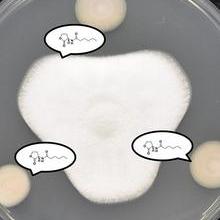
Environmental sensing and cell–cell communication collection – open for submissions
The last two decades have provided a wealth of new insight into how microbes (both prokaryotes and eukaryotes) sense and respond to their surroundings and to one another. Technological advances continue to shape our understanding of this burgeoning field, and this has led to a sea-change in how we view the microbial world. No longer are microbes viewed as being the archetypal single celled entities; instead, community spirit and coordinated responses are the order of the day. In line with the Microbiology Society-sponsored Cell-Cell Communication in Bacteria: Fundamental and Applied Aspects Focused Meeting, Guest Editors Martin Welch (University of Cambridge) and Anugraha Mathew (University of Zurich) aim to assemble a landmark collection of papers that celebrate the interaction of microbes with their environment and with one another.
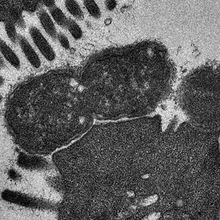
Bacterial cell envelopes
Over the years, Microbiology has published many important findings that have contributed enormously to our understanding of the structure, function and biogenesis of bacterial envelopes. Here we celebrate the journal's 75th year with a special collection of reviews guest-edited by Professor Tracy Palmer (Newcastle University, UK) and Dr Yinka Somorin (National University of Ireland, Galway) that highlights some of the most important areas of current research in this vibrant research field.

Fungal spotlight: host-associated microbiomes
Guest edited by Professor Corby Kistler (University of Minnesota, USA), Dr Ferry Hagen (Westerdijk Fungal Biodiversity Institute, The Netherlands), Dr David Fitzpatrick (Maynooth University, Ireland), and Dr Daniel Croll (University of Neuchâtel, Switzerland), this collection will feature studies of fungi in host-associated microbiomes, functional analysis of host-fungal or fungal-microbe interactions, the genetic and genomic diversity of host-associated fungi, as well as the impacts of environmental fungi in natural and manmade ecosystems.
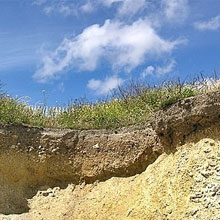
Implications of climate change for terrestrial microbiomes and global cycles
Soil microbiomes are highly diverse ecosystems that play a central role in ecosystem functioning and regulating global biogeochemical cycles.
The collection is guest-edited by Dr Michael Macey (Open University, UK), Dr Sarah Worsley (University of East Anglia, UK), and Dr Geertje van Keulen (Swansea University, UK), aims to highlight key research investigating the role of soil microbiomes in climate feedback processes, and their response to global change.
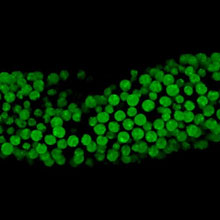
Symbiosis
Symbiosis has played a key role in the evolution of life on Earth. Symbiotic mergers of once independent species drove the origin of eukaryotes. Moreover, symbiosis has enabled many species to gain novel functions and occupy new ecological niches, thus underpinning the functioning of diverse ecosystems.
This collection, guest edited by Professor Michael Brockhurst (University of Manchester, UK) and Dr Rebecca J Hall (University of Birmingham, UK), will feature microbe-focused studies of symbiosis, ranging from the molecular mechanisms of host-symbiont interactions, their genetic and genomic diversity, to understanding the impacts of symbioses in natural and manmade ecosystems.
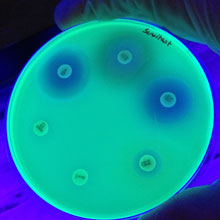
Antimicrobial resistance
Antimicrobial drugs underpin much of modern medicine. Bacteria, fungi, parasites and viruses that exhibit resistance to antimicrobials threaten the efficacy of therapeutics and impose significant global healthcare and economic burdens.
Guest-edited by Professor Willem van Schaik and Dr Robert Moran (both from University of Birmingham, UK), this Antimicrobial Resistance special collection aims to highlight research on the emergence, accumulation and spread of antimicrobial resistance, with a particular focus on opportunistic pathogens and the mobile genetic elements therein.

Marine microbiology
Covering over 70% of the Earth’s surface, the Oceans represent an incredibly diverse, yet understudied ecosystem. In particular, micro-organisms (bacteria, fungi, viruses and archaea) mediate key ecosystem processes in these marine systems and account for a majority of the biodiversity.
Guest-edited by Dr Katherine Duncan (University of Strathclyde, UK) and Dr Alex Chase (University of California, San Diego, USA), this Marine Microbiology special collection aims to highlight key research on marine microorganisms as they underpin the complex processes of our blue planet.
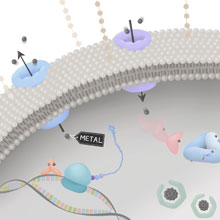
Metals in microbiology
Metals catalyse almost a half of all microbial reactions and yet can poison microorganisms. Metal handling systems - that maintain metal homeostasis - are thus vital to sustain microbial life. For microbial pathogens, the challenge of metal homeostasis is exacerbated by host immune defences that restrict metal access and that exploit the microbicidal activity of metals.
Guest-edited by Dr Jennifer Cavet (University of Manchester, UK) and Dr Karrera Djoko (Durham University, UK), this collection of keynote research articles will highlight research on metal-microbe interactions, bringing together advances in our understanding of how microbes handle metals, the utilization of metals in proteins and the importance of metal handling systems in host-pathogen interactions.
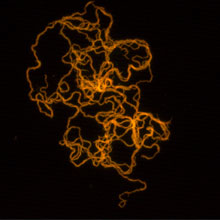
Mycobacteria
Mycobacteria are a vast group of microorganisms characterized by a unique thick, hydrophobic cell wall rich in mycolic acids, which makes them highly resistant to environmental stresses.
Guest-edited by Dr Riccardo Manganelli (University of Padova, Italy), this collection of keynote research articles will highlight all aspects of mycobacterial biology, with particular focus on physiological aspects, such as stress response mechanisms, regulatory networks, and metabolic pathways, that might lead to a better understanding of the intriguing aspects of mycobacterial host-pathogen interaction and lead to the design of new strategies to fight these important pathogens.


